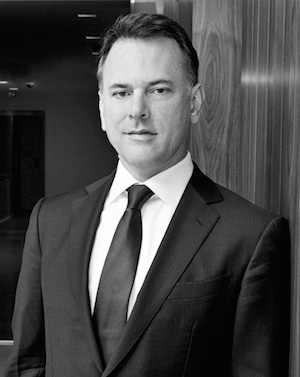 Robert Wallace, CEO, Stanford Management CompanyThe Stanford Management Company’s (SMC) new CEO has dismissed the majority of the endowment’s investment staff, according to five people with knowledge of the situation.
Robert Wallace, CEO, Stanford Management CompanyThe Stanford Management Company’s (SMC) new CEO has dismissed the majority of the endowment’s investment staff, according to five people with knowledge of the situation.
Robert Wallace, who took over SMC in late March, is said to have terminated most of the fund’s managing directors and directors last Friday. One senior industry professional has reportedly received an influx of résumés from outgoing SMC employees.
Dismissed staffers are said to include Karen Horn Welch, director of portfolio strategy, and public equity head Josh Richter. Fewer than five original team members remain.
A Stanford spokesperson confirmed to CIO that “several employees are leaving SMC,” but declined to comment on the circumstances of their departures, citing internal policy.
“It is not unusual for staff changes to occur following a transition in leadership in an investment organization,” he said. “SMC’s CEO, Rob Wallace, has been working since March on an investment strategy that places different demands on the organization.”
The exiting staff members will continue to work at the $25 billion endowment for the next several months. The spokesperson described these soon-to-be ex-employees as “part of a very successful investment team.”
SMC’s returns ranked ninth in 2014 and tenth over the last three years, behind Yale, Notre Dame, Princeton, Columbia, and others.
Wallace joined SMC after what sources described as an extremely competitive search process to replace former President and CEO John Powers. Prior to his current role, Wallace served as CEO and CIO of London-based family office Alta Advisers. He began his asset management career interning at the Yale Investment Office, later transitioning to a full-time senior associates role.
“Rob is a proven investor and senior manager, who brings experience in international investment management as well as a deep understanding of universities,” SMC board chair Bruce Dunlevie said in announcing his appointment. “We are so pleased to have him lead the Stanford Management Company.”
“There’s a lot of peer-to-peer competitiveness in the endowment world.”
This staff cull is not the first episode of internal upheaval at SMC in recent years. In 2010, the endowment hired former Hewlett-Packard CIO and Stanford alumnus Ken Frier to serve as CIO. The job had been open for 30 months when Frier signed on, replacing a CIO who had left after a year and a half. Frier lasted 10 months.
“There’s a lot of peer-to-peer competitiveness in the endowment world,” Frier told CIO in 2013. “When you’re the CIO of Hewlett-Packard and sharing results with your board—and we had always done very well—no one ever asks, ‘How did the IBM retirement plan do?’”
Stanford’s endowment—the fourth-largest in North America—has marginally outperformed the typical $1 billion-plus post-secondary fund over the last several years. SMC returned 16.8% in the 2014 fiscal year, topping its broader peer group by 30 basis points, according to NACUBO-Commonfund figures. Its 9.8% three-year gains showed the same spread, and over five years SMC has out-earned the group by 100 basis points.
SMC benchmarks itself against a narrower group of mostly Ivy League funds, sources said. Its earnings ranked ninth in 2014 and tenth over the last three years, behind Yale, Notre Dame, Princeton, Columbia, and others.
Wallace said in March that he was “delighted to join SMC and the Stanford community,” describing the endowment as a critical resource.
Replacements for the outgoing staff have not been revealed.
The Stanford spokesperson’s statement to CIO is reproduced in full below.
While the university and the Stanford Management Company do not speak in detail to internal personnel matters, it is not unusual for staff changes to occur following a transition in leadership in an investment organization. Several employees are leaving the Stanford Management Company. They have been part of a very successful investment team and will continue to work with SMC over the next several months. SMC’s CEO, Rob Wallace, has been working since March on an investment strategy that places different demands on the organization.
